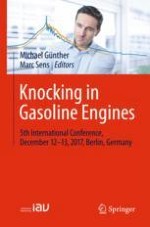2018 | OriginalPaper | Chapter
Development of a Model for Predicting the Knock Boundary in Consideration of Cooled Exhaust Gas Recirculation at Full Load
Authors : Alexander Fandakov, Michael Grill, Michael Bargende, Max Mally, Marco Günther, Stefan Pischinger, Liming Cai, Heinz Pitsch, Karl Alexander Heufer, Ajoy Ramalingam, Heiko Minwegen, André Casal Kulzer
Published in: Knocking in Gasoline Engines
Publisher: Springer International Publishing
Activate our intelligent search to find suitable subject content or patents.
Select sections of text to find matching patents with Artificial Intelligence. powered by
Select sections of text to find additional relevant content using AI-assisted search. powered by
